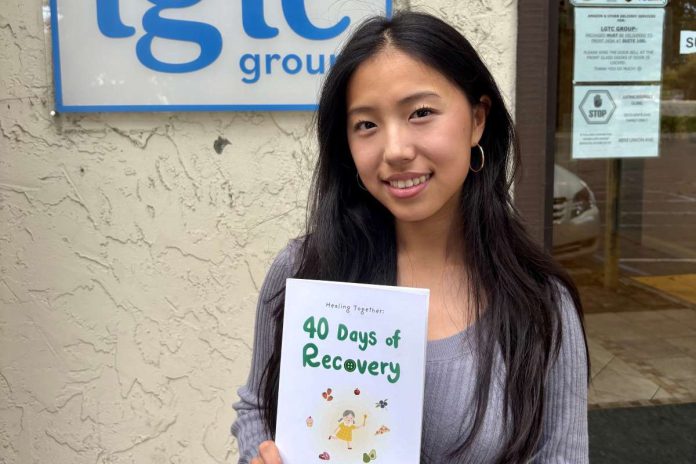America’s obsession with thinness is nothing new, but the explosive rise of “miracle” diet drugs has pushed it to a fever pitch. As an estimated one-in-eight adults in the U.S. try weight loss injections that suppress appetite and curb cravings, the cultural message is deafening: thinner is better.
At what point does the national obsession with dieting become an eating disorder? And how can we prevent children, the most impressionable and vulnerable population, from spiraling into a toxic relationship with food?
There’s a fine line between disordered eating habits and a full-blown medical diagnosis. Criteria for diagnosing eating disorders “span several pages, reflecting the multitude of interconnected psychological and behavioral factors,” said Nicole Zink, a licensed therapist and counselor for the City of Fremont who provides care for teens and children.
‘I wanted to make the reader feel like I was there for them. I wanted the book to be kind of like a conversation,” – Choeunchan Lee
Zink cited a myriad of harmful effects like hair loss, fainting, heart conditions, loss of menstrual cycles and changes in blood pressure to warrant immediate and intensive treatment.
Anorexia nervosa, or excessive weight loss caused by severe caloric restriction, can be especially fatal. A 2013 study described anorexia as having “the highest mortality rate of any psychiatric disorder, with approximately 5% of patients dying within four years of the diagnosis.”
The severity of this finding spurred Choeunchan Lee, a senior at American High School in Fremont, to write and publish “Healing Together: 40 Days of Recovery,” a workbook with daily exercises informed by her own experiences in overcoming the condition. Proceeds from her book sales will be donated to Project Heal, a nonprofit that offers eating disorder patients financial support and other resources to access treatment.
The path to recovery was lonely and difficult for Lee, who wiped away tears several times as she recounted her struggle to receive empathy and support.
“I was not able to get proper treatment that I really needed,” Lee said, reflecting that cultural differences likely played a role in her family underplaying the severity of her condition.
One page in the recovery journal instructs readers to ‘draw or print a photo of your younger self,’ encouraging an inner dialogue of self-compassion. Another exercise prompts readers to reflect on food rules and unnecessary restrictions.
When she was in the fourth grade, Lee immigrated to the United States from South Korea, a country with the highest rate of plastic surgery procedures in the world. “A lot of people there go through great lengths to modify how they look,” Lee explained, adding that there was a certain “glamour” to going on diets and being underweight.
The prevalence of diet culture can be invisible to parents across a variety of backgrounds. “Depending on the family system, it’s not uncommon for kids struggling with eating disorders to have parents who have issues with food as well,” said Zink.
At the same time, it’s important to de-stigmatize the condition and educate parents so they know their child’s eating disorder is not their fault. Unhealthy attitudes towards food are sometimes engrained in the cultural fabric, and parents can be victims too. Zink contrasts certain examples of culturally-accepted eating behavior to the intuitive approach by young children: “If they’re hungry they eat, if they’re not hungry, they won’t.”
Similarly, Lee’s workbook also emphasizes staying in tune with one’s body and appreciating food as nourishment. “I wanted to make the reader feel like I was there for them. I wanted the book to be kind of like a conversation,” Lee said, explaining that most books she encountered offered only advice and didn’t give the reader a chance to express their unique experiences.
One page in the recovery journal instructs readers to “draw or print a photo of your younger self,” encouraging an inner dialogue of self-compassion. Another exercise prompts readers to reflect on food rules and unnecessary restrictions.
Throughout the pages, the overall spirit of the workbook offers hope, reminding readers that recovery is possible and that the path towards health lies in acceptance, gratitude and compassion: a wonderful reminder for the holiday season.




